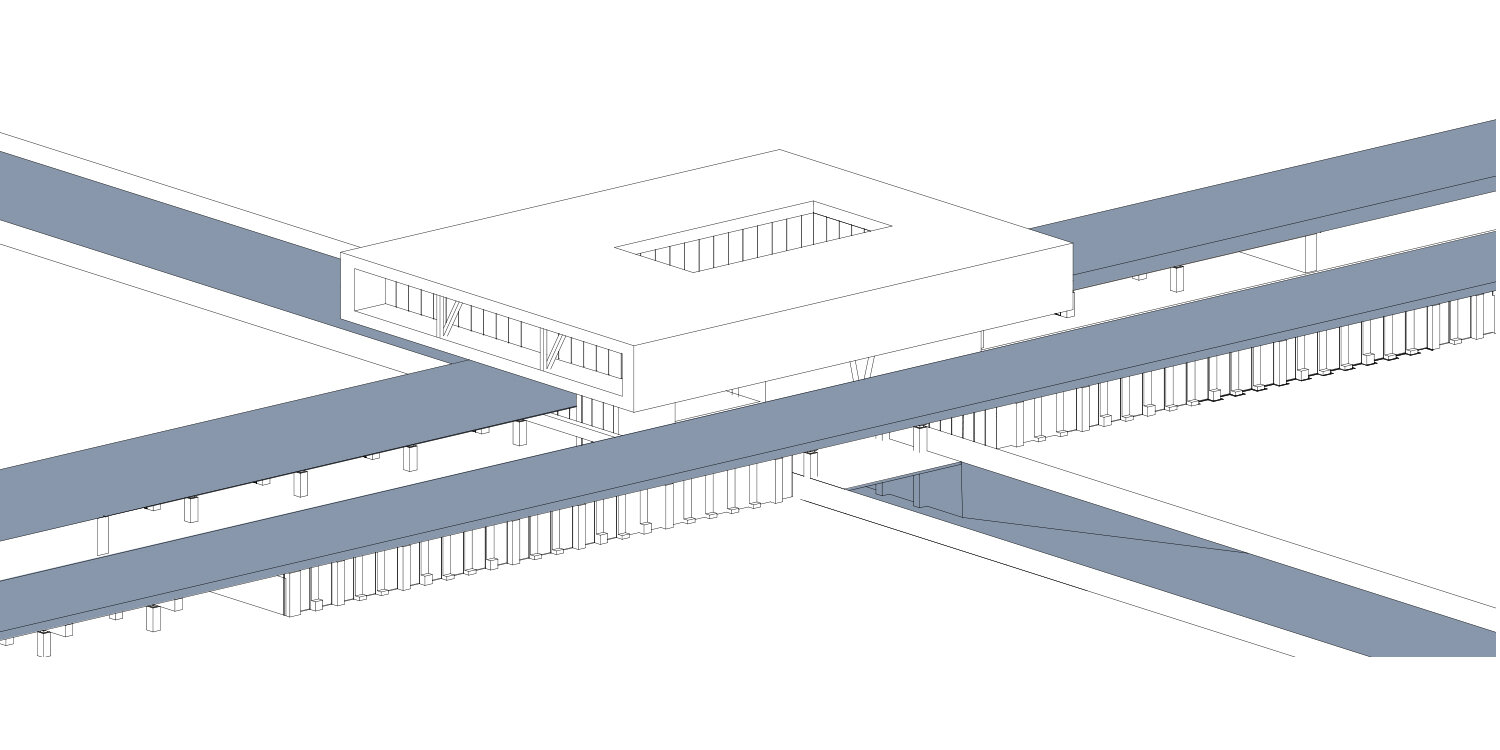How to build identity of a non-place
Identity in architecture consists of two collections of elements. Tangible group relates to the actual built environment such as shape, form and spatial arrangement - basically everything that can be visually perceived. The other group consists of intangible aspects that concern memory, experience and the notion of phenomenology in architecture. These two groups working simultaneously create a perception of a place but which of these two is more important when it comes to redefining identity of a non-place? Should a place-making project be mostly about providing experience? Is it possible to make a place just by building it?
1.Physical identity or mental identity?
I asked myself these and many more question when working on my graduation thesis " Redefining identity of the RingA10 in Amsterdam". I have started my project blindly beliving in the slogan " From a non place to a place to be" but quickly realised, that the strategy in such specific location as a ringroad in Amsterdam requires a deeper investigation.
I conducted an extensive participatory research and was quite surprised with the conslusions. Even though the mental image of a place is so strictly related to our feelings, the elements repeatedly mentioned were related to the visual experience of the built environent. For instance, the participants distinguished the sides of the ring mostly by the architecture style, typology or urban layout. This showed how powerful architecture is in creating identity of a place using visually stimulating architectural tools such as formal language, materialization and scale. This is why, the physical qualities gained special focus in my design process and were emphasized in the design proposal. The new definition of Identity was established as a guideline for the design process.
Identity - A Sum Of Specific Material Components And Features Which Promotes The Unique Non-Material Character Of A Place (Distinguishable From The Environment)
2. Finding a bedrock of a non-place
As previously concluded, Architecture would play a crucial role in recreating the image of the Ring A10 as a visual and programmatic identity. It also held big responsibility to deal with such individual phenomenon like human perception. Therefore, I proposed to first recognize its commonly known exclusive character, a feature of the environment that does not change in time.
“You can never start from scratch. It always builds upon a preexisting set of symbolic materials which form the bedrock”
(Thompson,1966)
3. Inviting people in the process - Participatory research and design.
To avoid subjectivity of one mind, I invited people to brainstorm with me on the “bedrock features” of the RingA10. We chose the notion of "street" as the main association with the location. This was then generalized into speed traffic and transport. These words served as a starting point of the workshops on symbolic representation of ideas.
The main goal of these workshops was primarily to understand how human mind translates words into forms. Secondly, in the reverse process, I tried to study how a visual feature can become part of a cognition of a place. The workshops resulted in 150 drawings, 150 individual interpretations of words. The next challenge was to combine and analyze them in order to find an architectural keynote. The process was time consuming because it required looking at each proposal individually simultaneously trying to find common features in all the drawings.
4. Establishing design principles
The participatory workshops led to forming a specific strategy, that gave direction to any further design decision. The 4 principles have been established in order to accentuate features of the new identity of the RingA10. They have been based on existing associations yet twisted, scaled up and emphasized in order to affirm the presence of the highway. Since they have been formed by people in the participatory process, hence the features are to be easily recognizable by the future users. Using such process, I made sure that the new identity of the RingA10 has already been planted in people minds.








